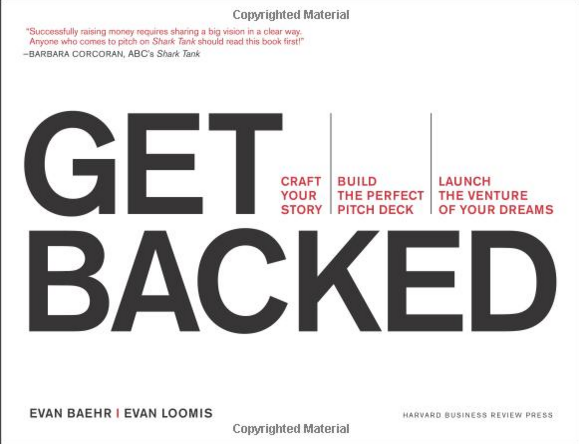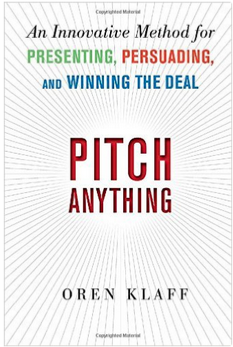The Big Idea: you need a well-designed pitch deck and a well-planned road show to raise serious money for your startup.
Pitch Deck
- Overview
- Opportunity
- Problem
- Solution
- Traction
- Customer or Market
- Competition
- Business Model
- Team
- Use of Funds
Road Show
- Investors love a great story
- Potential stories: origin story, customer story, industry story, venture growth story
- Use Nancy Duarte’s Sparkline to tell your story
Fundraising: From Meetings to Closing
- Book: Venture Deals by Brad Feld
- 80% of all funding comes from friends/family
- Equity crowdfunding is a new option: CircleUp, Crowdfunder
- Accelerators are a runway to funding; quality varies
- Ask these when thinking about an angel: do I like you? do I trust you? do I want to do business with you?
- Notable angels bring many connections and secondary investors
- AngelList is the LinkedIn for startups
- Post on AngelList after you’ve raised a third of your total
- Syndicates on AngelList pool lots of small investors together
- Relationships are more important than cash when fundraising
- Ways to stand out: handwritten thank you note, thoughtful gift, offering your personal network
- Asks: invest, join advisory board, introduce to others
- Find the super connectors and leverage weak ties
- Make your needs known
- Talk to everyone
- Work in public spaces
- See book for emails scripts: ask for feedback, ask for intro,
- Always follow up after an intro meeting with short email and clear next steps
- Investors ask themselves within the first meeting: do I like you? do I trust you? do I want to do business with you?
- So, be likable, be trustworthy, be someone they’d want to do business with
- Do your homework on anyone you meet with
- See book for scripts about meetings
- During meetings: find commonalities, ask great questions, listen, invite them to brainstorm or suggest improvements
- During the ask: make the investor feel like an important contributor, assume the sale, be comfortable with silence following the ask
- See book for scripts on how to make the ask
- Types of asks: lead your round >> invest >> join advisory board >> stay updated
- Send monthly updates for prospects via Mailchimp or bcc
- Keep these updates separate from investor/advisor updates
- See book for template of monthly updates
- Elements of the close: verbal yes, termsheet, due diligence, signatures and money transfer
- See book for list of due diligence docs
- See book for template on signature and money transfer

